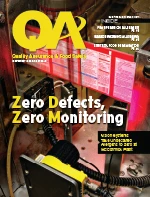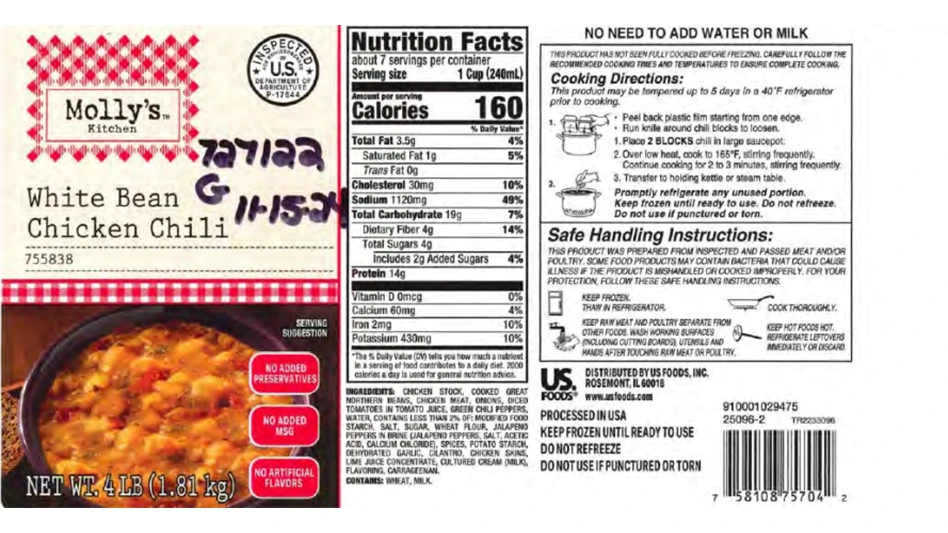We have all heard the phrase “Practice makes perfect.” But what does it mean, and how can we apply it to what we, as food safety professionals, do every day? Wikipedia’s definition of practice is: “the act of rehearsing a behavior over and over, or engaging in an activity again and again, for the purpose of improving or mastering it, as in the phrase ‘practice makes perfect.’ Sports teams practice to prepare for actual games. Playing a musical instrument well takes a lot of practice. It is a method of learning and of acquiring experience.”
While such practice is paramount to all our food safety duties, the focus of this article is on its particular importance when it comes to recalls. The best way to destroy your business is to not be prepared for a recall.
Let’s start with an assumption. Even if you have never had a recall, the odds are that, at some time — tomorrow, next month, next year, even after you are long gone — it will happen. Don’t fool yourself and your company into thinking, “It can’t happen to me/us.” As food safety professionals, we have to plan for the worst and be prepared and proactive. That’s what we get paid for. The best way to prepare for this eventuality is to perform a mock recall.
The Mock Recall. So what are the steps to this? And what are we trying to accomplish? The number one thing is to find the holes in our system. A mock recall should show you your problems, your mistakes, your deficiencies. Although part of the goal of a mock recall is to be able to locate 100 percent of your product, it needs to be used as an activity to make improvements in your system.
The keys to an effective mock recall are:
- Be realistic.
- Be comprehensive.
- Document everything.
- Critique/review yourself and your system.
- Assess the effectiveness of the mock recall.
The steps for an effective mock recall are:
Step 1: Determine the item you will use for your mock recall and the reason why. Be honest. Pick something that could happen. If you make a lot of products with allergens, do a recall with allergens not listed on a label. If you make ground beef, do a recall for E. coli O157:H7 (and the other six). If you make ready-to-eat foods, do a recall based on Listeria. Decide on a real problem that could occur (or has occurred but was caught), and make it your reason. Don’t fool yourself by picking something easy or a product that is only in your warehouse. You will not learn anything or help your company by making it “easy.“ What about suppliers? Try a recall based on packaging or ingredients. If it can happen to you, it will happen to you.
Step 2: Get management commitment to the mock recall. Management has to be actively involved and lead the way. If they don’t take it seriously, the rest of the staff won’t either. Explain to your management the importance of “practice makes perfect.” Put it in dollars and cents. Explain that by doing this now and seeing the problems and mistakes, it can save thousands, if not millions, of dollars when (and not if) a recall happens. Don’t try to do it by yourself. If you haven’t established a recall team, now is the time to do so.
Step 3: Conduct the mock recall. Don’t announce it and don’t make it convenient. I know of a plant that did a mock recall on Christmas Eve. Obviously this would help you learn how to contact customers at off times. Sales personnel at your plants are usually very good of being able to get hold of their customers from 8 a.m. to 5 p.m. But what about after 5? Or on a weekend or holiday? Remember, when that recall hits it doesn’t wait until it’s convenient for you! I cannot say it enough: Treat it like it is real. Every step in your recall plan must be performed. Have someone there to take notes and document everything. Look for problems. Don’t get frustrated as you uncover problems; remember that finding problems is the point of the exercise.
Common Problems. Some common problems you may discover in a mock recall are:
- Incomplete or inadequate customer contact list (remember every customer needs a 24-hour contact and alternate).
- Incomplete traceability procedures.
- Public relations issues (how to write a press release, how to deal with media).
- Label and/or coding problems with items.
- Product being sold to one person and given to another customer on the road.
- Lack of control of product on hold in multiple locations.
- What to do with the product at customers’ locations and how to get it back.
- Dealing with USDA/FDA.
Remember, the new regulations require you to contact USDA within 24 hours of any possibility that you have misbranded or adulterated product in commerce.
Step 4: When you are finished and the dust is settled, conduct a review and critique of yourself and your program. What went well? What went wrong? What areas can be improved? Document these findings and make the necessary changes to your recall plan. Learn from each mock recall you perform. Get input from all personnel involved. What did they have problems doing? What resources were lacking to help your employees?
As always, please feel free to contact me at bhonigbaum@giemedia.com with any questions about your Recall Program or anything on which you have a question.
Helpful Links
- FSIS Recall Directive — http://www.fsis.usda.gov/OPPDE/rdad/FSISDirectives/8080.1.pdf
- USDA Notification — http://www.fsis.usda.gov/PDF/Regulation_Changes_2008-0025.pdf
- FDA Guidance for Industry: Product Recalls, Including Removals and Corrections — http://www.fda.gov/Safety/Recalls/IndustryGuidance/ucm129259.htm

Explore the December 2012 Issue
Check out more from this issue and find your next story to read.
Latest from Quality Assurance & Food Safety
- Boston Sword & Tuna Protects Seafood Safety with Mettler-Toledo Metal Detectors
- IFT Releases New Resources to Aid Food and Beverage Industry in Sugar Reduction
- Yum! Brands CEO David Gibbs to Retire in 2026
- Penn State Extension Offers Short Course on Food Microbiology and Safety for Food Plant Workers
- Johnsonville Recalls Cheddar Bratwurst Due to Possible Plastic Contamination
- Cabot Creamery Butter Recalled Due to Possible Fecal Contamination
- USDA Delays Salmonella Testing Program for Breaded Stuffed Chicken
- FDA Extends Comment Period on Poppy Seeds to June 16





